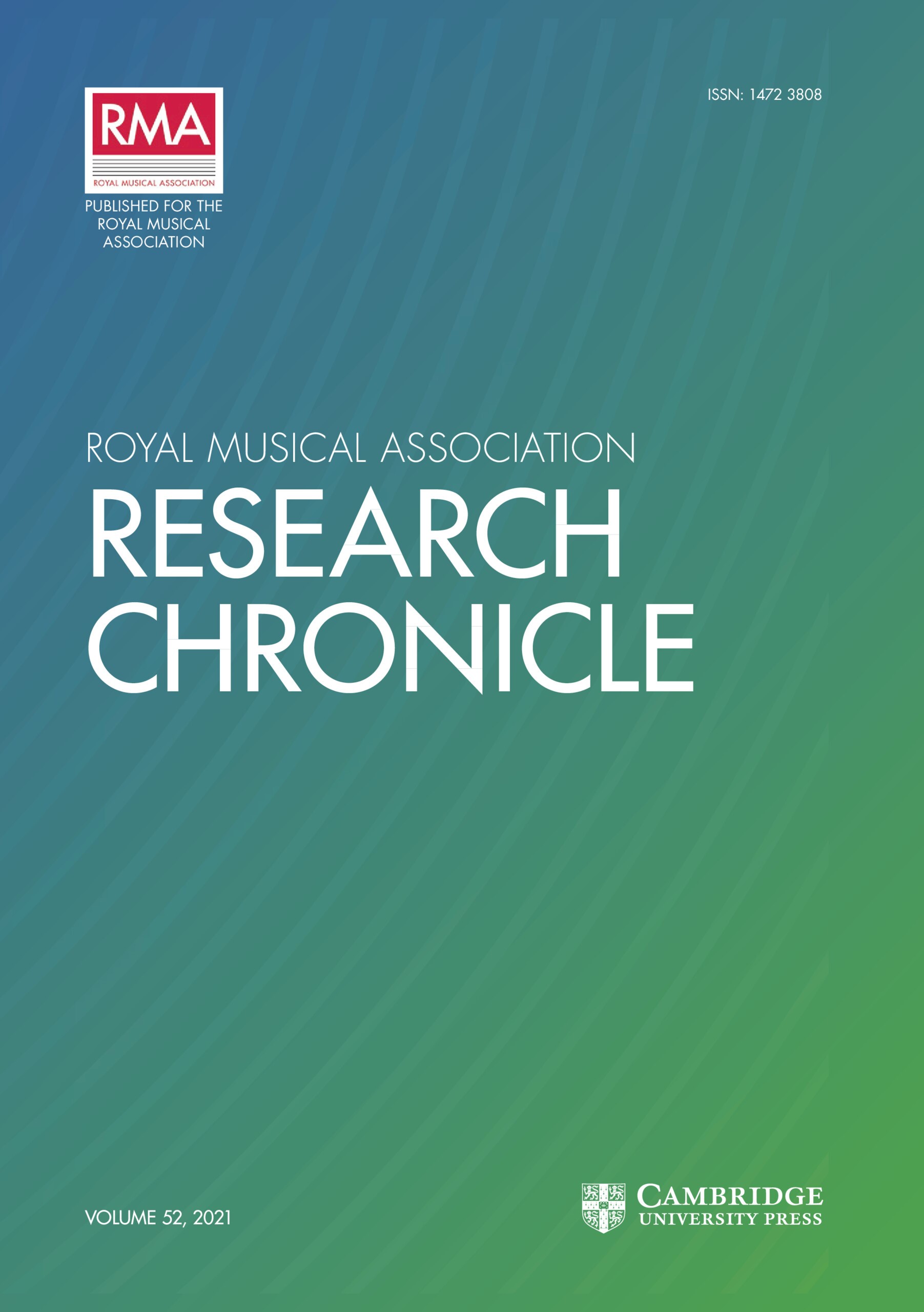No CrossRef data available.
Article contents
Concordances for Singing-Terms Common to the Septuagint and the Greek New Testament
Published online by Cambridge University Press: 01 January 2020
Extract
The Greek writings of early Christians and Hellenized Jews have three terms in common to refer to and designate song and singing: humnos, ōdē and psalmos and cognate forms of these. In the literature the terms and their cognates appear frequently, both in isolation and variously together. In the Septuagint (see below), for example, in 3 Maccabees, it is to be found that freed Jewish captives included ōdēn (6: 32), psalmois (6: 35) and humnois (7: 16b) in their celebratory singing. In the Greek New Testament, in Ephesians 5: 19 and Colossians 3: 16, the members of the Christian congregations to whom these letters are addressed are urged to sing psalmois, humnois and ōdais pneumatikais (‘psalms’, ‘hymns’ and ‘spiritual songs‘).
- Type
- Articles
- Information
- Copyright
- Copyright © Royal Musical Association, 1995
References
Notes
1 The Septuagint is cited according to Septuaginta. Id est Vetus Testamentum graece iuxta LXX interpretes, ed. Alfred Rahlfs, 2 vols. (Stuttgart, 1935).Google Scholar
2 The Greek New Testament is cited according to Novum Testamentum graece, ed. Nestle-Aland (26th edn., 4th (revised) reprint, Stuttgart, 1981).Google Scholar
3 The question of whether the presence of common terms implies common types of singing is discussed in J.A. Smith, ‘First-Century Christian Singing and its Relationship to Contemporary Jewish Religious Song’, Music & Letters, 75 (1994), 1–15, especially 4–10.Google Scholar
4 Septuaginta, ed. Rahlfs, i, [XXII].Google Scholar
5 Letter of Aristeas, verses 46–50. The text of the Letter of Aristeas is available in English in The Old Testament Pseudepigrapha, ed. James H. Charlesworth (London, 1985), ii, [12]–34.Google Scholar
6 See R.J.H. Shutt's introduction to his translation of the Letter of Aristeas in The Old Testament Pseudepigrapha, ed. Charlesworth, ii, [7]. The historical summary that follows is based on Septuaginta, ed. Rahlfs, i, XXII-XXXI, and Emil Schürer, The History of the Jewish People in the Age of Jesus Christ, English version, rev. & ed. Geza Vermes, Fergus Millar and Martin Goodman, 3 vols. (Edinburgh, 1973–1987), iii/1, [474]–504.Google Scholar
7 On the formation of the New Testament canon, see New Testament Apocrypha, rev. & ed. Wilhelm Schneemelcher, English translation ed. Robert McLachlan Wilson (Cambridge and Louisville), i (1991), 10–50.Google Scholar
8 See, for example, John A.T. Robinson, Redating the New Testament (London, 1976), passim.Google Scholar
9 Information on the earliest (Greek) manuscripts of the New Testament is from Novum Tesamentum graece, ed. Nestle-Aland, 684–710.Google Scholar
10 See Smith, ‘First-Century Christian Singing and its Relationship to Contemporary Jewish Religious Song’, especially 4–10.Google Scholar
11 Flavius Josephus, Bellum Judaicum, ii, 15: 4.Google Scholar
12 Concordances for book, chapter and verse divisions in the standard editions of the Hebrew Old Testament are given in Novum Testamentum graece, ed. Nestle-Aland, [739]–769. In some instances in the standard English versions of the Old Testament the divisions differ from those of both the LXX (Rahlfs) and the Hebrew. There are also some differences in the divisions of the books of the Apocrypha in the standard English versions compared with the LXX (Rahlfs).Google Scholar
13 in the Codex Vaticanus.Google Scholar
14 in the Codex Alexandrinus.Google Scholar
15 in the Codex Vaticanus.Google Scholar
16 in the Codex Alexandrinus.Google Scholar
17 Occurs within a quotation from LXX Psalm 21: 23. This reference is not given in Clinton Morrison, An Analytical Concordance (see above, p. 17, under the heading New Testament concordances).Google Scholar
18 Used in the phrase ōdēn kainēn, ‘a new song’.Google Scholar
19 First time in the phrase ōdēn kainēn (see preceding note).Google Scholar
20 Occurs within a quotation from LXX Psalm 17: 50 (= also LXX Regnorum II, 22: 50).Google Scholar
21 Used in the phrase biblō psalmōn, ‘the Book of Psalms’, and followed by a quotation from LXX Psalm 109: 1.Google Scholar
22 Means here ‘the psalms’, i.e. the Book of Psalms.Google Scholar
23 Used in the phrase biblō psalmōn, ‘the Book of Psalms’, and followed by a quotation from LXX Psalm 68: 26.Google Scholar
24 Used in the phrase en tō psalmō to deuterō, ‘in the second Psalm’ (some manuscripts have en tō prōtō psalmō, ‘in the first Psalm’; a few other manuscripts have en tois psalmois, ‘in the psalms‘) followed by a quotation from LXX Psalm 2: 7.Google Scholar
25 See note 18 above.Google Scholar
26 See note 19 above.Google Scholar
27 See note 21 above.Google Scholar
28 See note 22 above.Google Scholar
29 See note 23 above.Google Scholar
30 See note 24 above.Google Scholar
31 See note 17 above.Google Scholar
32 See note 20 above.Google Scholar


